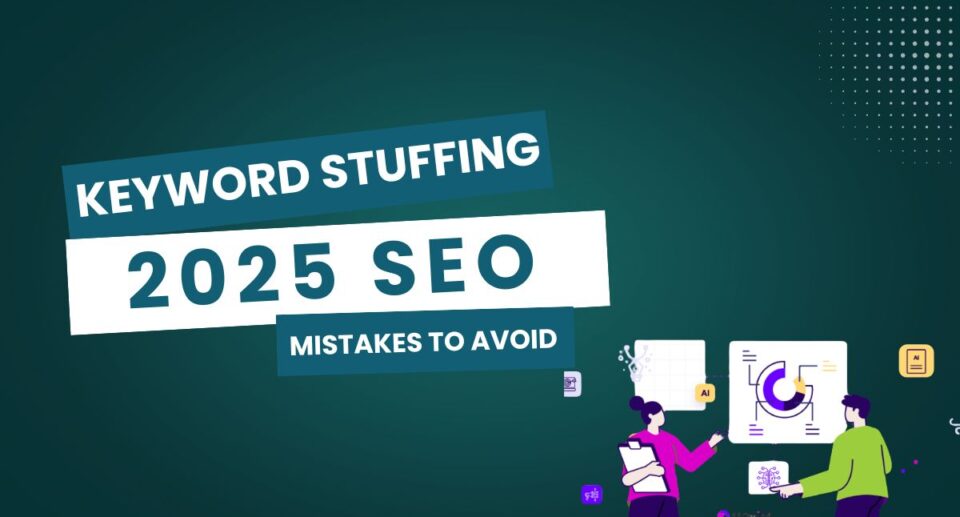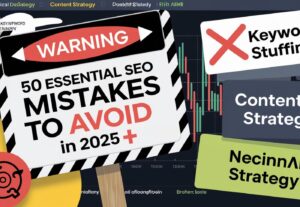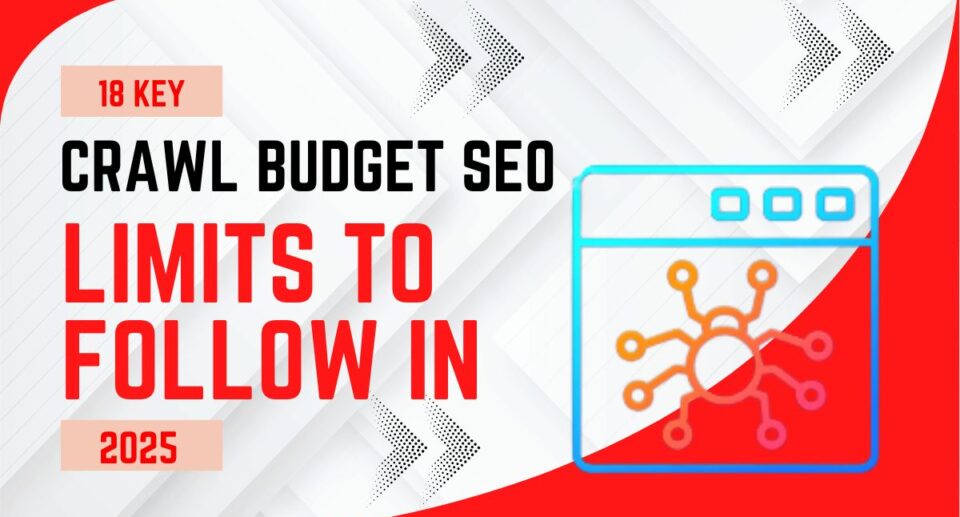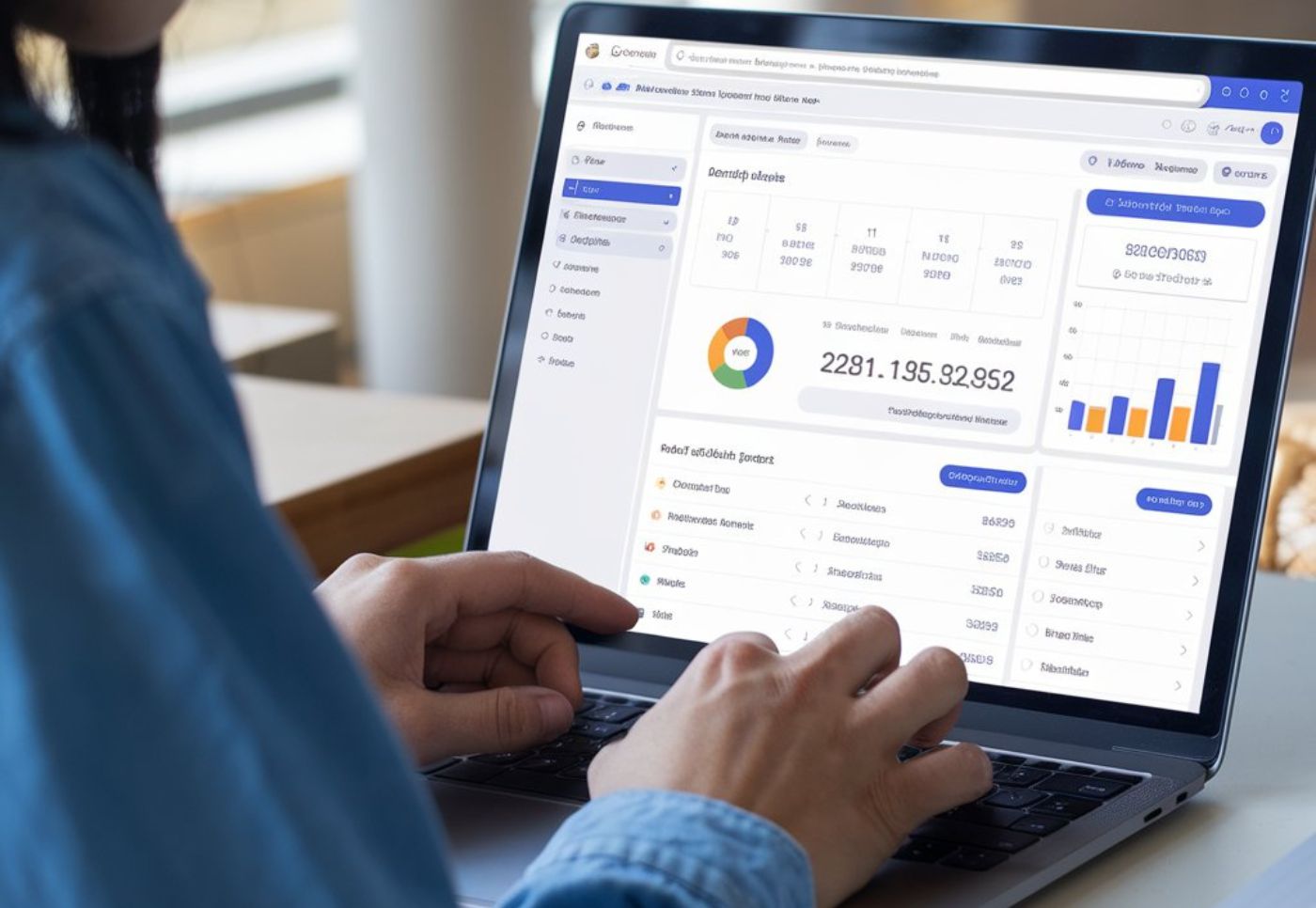Keyword Stuffing: 2025 SEO Mistakes to Avoid

Introduction
Have you ever spent countless hours optimizing your website only to find your rankings dropping instead of climbing? You’re not alone. According to a recent study by Ahrefs, 90.63% of pages get zero organic traffic from Google, often due to simple but critical SEO mistakes. In 2025, search engines have evolved significantly, with AI driving more personalized search experiences and user expectations higher than ever. Keyword stuffing, once a common tactic, now represents just one of many outdated practices that can actively harm your site’s visibility. The days of manipulation are over, replaced by an era where understanding user intent and delivering genuine value reign supreme. This comprehensive guide reveals the 50 most damaging SEO mistakes to avoid this year—some technical, others strategic, but all potentially devastating to your organic growth if left uncorrected. Whether you’re a seasoned SEO professional or just starting your digital journey, these insights will help you navigate the increasingly complex landscape of search optimization in 2025.
Why Avoiding SEO Mistakes Is Critical in 2025
The Evolving Search Landscape
Search engines have undergone a dramatic transformation since 2023. Google’s continuous algorithm updates, including the Advanced Search Generative Experience (SGE) and the Helpful Content System, have fundamentally changed how content is ranked and displayed. In 2025, AI-powered search doesn’t just look for keyword stuffing—it evaluates experience, expertise, and the genuinely helpful nature of your content.
When you make SEO mistakes today, the consequences are far more severe than they were just a few years ago. A technical error that might have caused a minor ranking drop in 2023 could now completely remove your site from search results. Keyword stuffing, once just frowned upon, now triggers immediate penalties as search engines have become increasingly sophisticated at detecting manipulation.
The Real-World Impact of SEO Mistakes
Consider this: A single core web vital issue could decrease your conversion rate by up to 20%, according to Google’s own research. With over 60% of all web traffic now coming from mobile devices, neglecting mobile optimization isn’t just a minor oversight—it’s potentially cutting off more than half your audience.
The financial impact is equally significant. A mid-sized business that drops from position 3 to position 6 for their primary keywords could lose $10,000-$50,000 in monthly revenue. In competitive industries, this difference can be the line between profitability and closure.
 The Opportunity Cost
The Opportunity Cost
Think of your SEO strategy like a garden. Every mistake is a weed that not only takes up space but actively prevents your beautiful plants (your content and user experience) from thriving. By eliminating these weeds, you create room for extraordinary growth keyword stuffing.
In 2025, sites that avoid these critical mistakes aren’t just maintaining their position—they’re experiencing unprecedented growth as competitors continue to fall into the same traps. The gap between SEO winners and losers has never been wider.
Essential Tools to Identify SEO Mistakes
Before diving into specific mistakes, let’s explore the tools that can help you identify and fix them:
Core SEO Audit Tools
- Semrush – Comprehensive SEO toolkit with site audit capabilities
- Ahrefs – Powerful backlink analysis and technical SEO checking
- Screaming Frog – Detailed crawling to find technical issues
- Google Search Console – Official insights directly from Google
- PageSpeed Insights – Core Web Vitals and performance analysis
Specialized SEO Tools
- Surfer SEO – Content optimization and semantic analysis
- Clearscope – Advanced content and keyword optimization
- Schema App – Structured data implementation and testing
- Mobile-Friendly Test – Google’s official mobile usability checker
- Rank Math or Yoast SEO – WordPress plugins for on-page optimization keyword stuffing
TIP: Don’t just use these tools once—schedule regular audits (monthly for large sites, quarterly for smaller ones) to catch issues before they impact your rankings.
Now, let’s dive into the 50 most critical SEO mistakes to avoid in 2025.
Technical SEO Mistakes to Avoid
Core Technical Issues
1. Neglecting Core Web Vitals
Core Web Vitals have evolved from important metrics to critical ranking factors. In 2025, sites with poor Largest Contentful Paint (LCP), First Input Delay (FID), and Cumulative Layout Shift (CLS) scores struggle to rank regardless of content quality.
Solution: Use PageSpeed Insights and Chrome User Experience Report data to identify specific issues. Optimize images, implement lazy loading, minimize JavaScript, and consider a performance-focused hosting provider.
2. Missing or Poorly Implemented XML Sitemaps
An outdated or missing XML sitemap prevents search engines from efficiently crawling your site. In 2025, with content volume increasing exponentially, this is like failing to provide a map to visitors in a massive complex.
Solution: Generate a comprehensive XML sitemap that includes all important pages but excludes thin content. Update it automatically when new content is published and submit it through Google Search Console and Bing Webmaster Tools.
3. Ignoring Robots.txt Configuration
Improper robots.txt settings can accidentally block search engines from crawling important pages or allow them into sections containing duplicate or thin content.
Solution: Regularly audit your robots.txt file to ensure it’s properly directing crawlers. Be especially careful with staging environments and test sites keyword stuffing.
4. Unoptimized Site Architecture
Flat site architecture is now essential for both user experience and search crawlability. Sites with content buried more than three clicks from the homepage are seeing significant ranking penalties.
Solution: Restructure your site to ensure important pages are no more than three clicks from the homepage. Implement breadcrumbs and clear navigation paths.
5. Insufficient HTTPS Implementation
Beyond having an SSL certificate, mixed content issues (where some resources load over HTTP) create security warnings that damage both rankings and user trust.
Solution: Use tools like Why No Padlock to identify and fix mixed content issues. Ensure all resources, including images and scripts, load securely.
URL Structure and Redirect Issues
6. Using Messy, Non-Descriptive URLs
Long, parameter-filled URLs confuse both users and search engines. In 2025, clean URL structure has become even more important for both rankings and click-through rates.
Solution: Implement a clear, hierarchical URL structure using relevant keywords and readable paths (e.g., yourdomain.com/category/subcategory/page-name).
7. Improper Redirect Implementation
 Redirect chains, temporary redirects for permanent changes, and missing redirects for deleted content all create crawl budget waste and potential ranking losses.
Redirect chains, temporary redirects for permanent changes, and missing redirects for deleted content all create crawl budget waste and potential ranking losses.
Solution: Audit all redirects quarterly. Use 301 redirects for permanent moves, ensure redirects point directly to final destinations (no chains), and always redirect removed content to relevant alternatives keyword stuffing.
8. Canonicalization Errors
Multiple versions of the same page (with/without www, with/without trailing slashes) dilute ranking signals and can lead to duplicate content issues.
Solution: Implement proper canonical tags and server-side canonicalization to ensure a single preferred version of each page.
9. Broken Internal Links
Broken internal links waste crawl budget and create poor user experiences. With AI-driven search increasingly valuing user satisfaction metrics, these errors can significantly impact rankings.
Solution: Run regular link audits using tools like Screaming Frog to identify and fix broken internal links.
10. Orphaned Pages
Pages without internal links pointing to them may never be discovered by search engines, wasting valuable content.
Solution: Ensure every important page has multiple internal links pointing to it from relevant locations.
Technical Performance Issues
11. Server Response Time Problems
Slow Time to First Byte (TTFB) creates cascading performance issues that affect both user experience and search rankings.
Solution: Upgrade hosting if necessary, implement caching, and optimize server configuration to reduce initial response times.
12. Excessive JavaScript Rendering
Search engines have improved JS rendering capabilities, but heavy JavaScript dependencies still create indexing issues and slow page loads.
Solution: Implement server-side rendering or pre-rendering for critical content. Use tools like Puppeteer to visualize your site as search engines see it.
13. Unoptimized Images and Media
Large, uncompressed images are still one of the primary causes of poor page speed in 2025, despite advances in image formats.
Solution: Implement next-gen formats (WebP, AVIF), proper sizing, and lazy loading for images. Consider using an image CDN for automatic optimization.
14. Excessive Plugin Usage
Each additional plugin or script adds bloat and potential conflicts, particularly on WordPress sites.
Solution: Conduct a plugin audit to remove unnecessary tools. Consolidate functionality where possible and choose performance-optimized alternatives.
15. Ignoring Mobile-First Indexing
Google has been mobile-first for years, yet many sites still prioritize desktop experiences, leading to poor mobile performance.
Solution: Design for mobile first, then enhance for desktop. Test your site on actual mobile devices regularly.
Content & Keyword Strategy Mistakes
Keyword Selection and Usage
16. Keyword Stuffing
Perhaps the most classic SEO mistake, keyword stuffing remains a significant issue in 2025. This practice involves overloading content with target keywords in an unnatural way, attempting to manipulate rankings.
Modern search algorithms instantly recognize this manipulation, often resulting in significant penalties. In my experience working with recovery clients, sites using keyword stuffing often see 40-60% traffic drops following algorithm updates.
Solution: Focus on topical coverage and natural language use. Aim for a keyword density of 1-2% maximum, prioritizing readability and user value above all. Tools like Clearscope can help ensure you’re covering topic thoroughly without resorting to keyword stuffing.
17. Targeting Unrealistic Keywords
Many businesses waste resources pursuing high-volume keywords they can’t realistically rank for, ignoring more valuable long-tail opportunities keyword stuffing.
Solution: Conduct thorough keyword research focusing on relevance, intent match, and competition level. Use tools like Semrush’s Keyword Difficulty metric to identify realistic targets.
18. Ignoring Search Intent
Creating content that doesn’t match the intent behind searches (informational, navigational, commercial, or transactional) guarantees poor performance regardless of other optimizations.
Solution: Analyze the current top-ranking pages for your target keywords to understand the dominant intent, then create content that satisfies that specific need.
19. Overlooking Semantic Keywords and Entities
Focusing solely on primary keywords while ignoring related concepts and entities limits your content’s relevance and ranking potential.
Solution: Use NLP tools like IBM Watson or Google’s Natural Language API to identify related entities and concepts to include in your content.
20. Neglecting Long-Tail Keywords
High-volume head terms get all the attention, but long-tail keywords often drive more qualified traffic and conversions.
Solution: Use tools like AnswerThePublic and People Also Ask boxes to identify valuable long-tail opportunities with clear intent.
Content Quality and Structure
21. Publishing Thin Content
Brief, shallow content rarely satisfies user needs in 2025’s competitive landscape. Google’s helpful content system specifically targets superficial content.
Solution: Develop comprehensive resources that thoroughly address user questions and needs. Aim for complete topic coverage rather than specific word counts keyword stuffing.
22. Neglecting E-E-A-T Signals
Experience, Expertise, Authoritativeness, and Trustworthiness have become essential ranking factors, especially for YMYL (Your Money or Your Life) topics.
Solution: Highlight author credentials, cite authoritative sources, maintain accurate information, and showcase real-world experience with the topic.
23. Poor Content Structure
Wall-of-text content with minimal formatting creates poor user experiences and lower engagement metrics.
Solution: Use proper heading hierarchy (H1 through H6), short paragraphs, bullet points, tables, and other formatting elements to improve readability.
24. Duplicate Content Issues
Identical or near-identical content across multiple pages confuses search engines and dilutes ranking signals.
Solution: Create unique content for each page. For necessary duplicates (like product descriptions), use canonical tags to indicate the preferred version.
25. Outdated Content
Maintaining outdated information damages user trust and search relevance signals.
Solution: Implement a content audit schedule to identify and update outdated content. Add “last updated” dates to signal freshness to both users and search engines keyword stuffing.
Content Strategy Mistakes
26. No Content Calendar or Strategy
Publishing randomly without a coherent strategy prevents building topical authority and creates content gaps.
Solution: Develop a detailed content calendar addressing specific user needs, keyword opportunities, and business goals.
27. Ignoring Content Hub Potential
Failing to link related content into topic clusters misses opportunities to build topical authority.
Solution: Organize content into pillar pages and supporting cluster content, with strong internal linking between related resources.
28. Neglecting Content Refreshes
Focusing only on new content while ignoring performance optimization for existing assets wastes valuable resources.
Solution: Regularly audit existing content, updating and expanding high-potential pages rather than always creating new ones.
29. Over-Optimizing Anchor Text
Using the exact same keyword-rich anchor text for internal links appears manipulative and can trigger penalties.
Solution: Use varied, natural anchor text that helps users understand where the link leads.
30. Insufficient Content Depth
Surface-level content covering only basic aspects of a topic rarely ranks well in 2025’s competitive landscape.
Solution: Create in-depth resources addressing all aspects of a topic, including examples, case studies, statistics, and actionable advice.
User Experience & Mobile SEO Pitfalls
Core UX Issues
31. Intrusive Interstitials and Pop-ups
Despite years of warnings, sites continue using intrusive pop-ups that interfere with content consumption, especially on mobile.
Solution: Eliminate or minimize interstitials, particularly on mobile. If necessary, use less intrusive formats like small banners or slide-ins.
32. Confusing Navigation
Complex, unclear navigation frustrates users and increases bounce rates.
Solution: Implement clear, logical site navigation with descriptive labels. Consider adding a search function for larger sites.
33. Ignoring Page Experience Signals
The combination of Core Web Vitals and traditional UX signals (mobile-friendliness, safe browsing, HTTPS, non-intrusive interstitials) now significantly impacts rankings.
Solution: Use Google’s Page Experience report in Search Console to identify and address specific issues.
34. Poor Internal Linking Strategy
Haphazard internal linking misses opportunities to guide users through your site and distribute page authority.
Solution: Create a strategic internal linking plan that connects related content and guides users through logical paths.
35. Slow-Loading Resources
Third-party scripts, unoptimized videos, and large CSS/JS files continue to plague site performance.
Solution: Regularly audit all external resources. Remove unnecessary scripts, lazy-load non-critical elements, and optimize all media.
Mobile-Specific Issues
36. Non-Responsive Design Elements
Elements that work on desktop but break on mobile create frustrating user experiences keyword stuffing.
Solution: Test your site on multiple mobile devices and screen sizes. Fix any elements that don’t adapt properly.
37. Touch Target Size Problems
Small, closely-spaced clickable elements create usability issues on touch screens.
Solution: Ensure all clickable elements are at least 44×44 pixels and have adequate spacing between them.
38. Font Size and Readability Issues
Small fonts or poor contrast force users to zoom and struggle with content consumption.
Solution: Use a minimum 16px font size for body text and ensure strong contrast between text and background.
39. Horizontal Scrolling Requirements
Content that extends beyond the viewport width creates poor user experiences.
Solution: Set proper viewport meta tags and ensure all content fits within the screen width without horizontal scrolling.
40. Ignoring Mobile Page Speed
Mobile connections are often slower and less stable than desktop, making speed even more critical.
Solution: Test and optimize specifically for mobile speed, prioritizing critical rendering path elements.
Off-Page SEO & Link Building Errors
Link Building Mistakes
41. Pursuing Quantity Over Quality in Links
Mass acquiring low-quality links no longer works and often triggers penalties in 2025’s sophisticated algorithms.
Solution: Focus on earning fewer, higher-quality links from relevant, authoritative sites in your industry.
42. Ignoring Toxic Backlinks
Spammy or low-quality backlinks can still harm your site’s reputation and rankings.
Solution: Regularly audit your backlink profile and disavow harmful links through Google Search Console.
43. Neglecting Link Reclamation
Failing to reclaim lost links (from site migrations, content changes, etc.) wastes valuable link equity.
Solution: Monitor for broken backlinks using tools like Ahrefs and reach out to site owners to update links when they break.
44. Overlooking Internal Link Opportunities
Focusing solely on external links while neglecting internal linking misses easy opportunities to distribute authority.
Solution: Implement a strategic internal linking plan that connects related content and guides users through logical paths.
45. Inconsistent NAP Citations
For local businesses, inconsistent Name, Address, and Phone information across the web damages local ranking potential.
Solution: Audit and correct NAP citations across all business directories and listings to ensure consistency.
AI & Future-Proofing Mistakes
46. Blind Reliance on AI Content Generation
Publishing raw AI-generated content without human editing and enhancement creates generic, low-value pages that perform poorly.
Solution: Use AI as a starting point but always add human expertise, original insights, and brand voice before publishing.
47. Ignoring Structured Data Opportunities
Structured data has become essential for rich results and AI understanding, yet many sites still implement it minimally or incorrectly.
Solution: Implement comprehensive schema markup for all appropriate content types. Test implementation using Google’s Rich Results Test.
48. Neglecting Voice Search Optimization
With voice search continuing to grow, ignoring natural language patterns and question-based queries limits visibility.
Solution: Optimize for conversational queries and questions. Create content that directly answers common questions in your niche.
49. Overlooking Video Content Potential
Video results are increasingly prominent in search, yet many businesses still focus exclusively on text.
Solution: Develop a video strategy that complements your text content. Include proper transcripts and structured data for videos.
50. Failing to Adapt to SGE (Search Generative Experience)
Google’s SGE has changed how results appear, yet many sites haven’t adapted their content strategy.
Solution: Focus on creating content that can serve as an authoritative source for AI-generated answers. Use clear definitions, concise explanations, and well-structured information.
How to Measure and Track SEO Success
Setting the Right KPIs
Tracking the wrong metrics leads to misguided strategies. In 2025, focus on these key performance indicators:
- Organic visibility (not just rankings)
- Click-through rates from search results
- Page-level engagement metrics (time on page, scroll depth)
- Conversion rates from organic traffic
- Share of voice within your industry
Essential Tracking Tools
To effectively monitor these KPIs, you’ll need:
- Google Search Console for search performance data
- Google Analytics 4 for user behavior and conversion tracking
- SEO visibility tools like Semrush or Ahrefs
- Heat mapping tools like Hotjar or Microsoft Clarity
- Custom dashboards combining data from multiple sources
Implementing Regular Audits
TIP: Create a quarterly SEO audit schedule, focusing on different aspects each month:
- Month 1: Technical SEO
- Month 2: Content performance
- Month 3: User experience and Core Web Vitals
This rotating schedule ensures you catch issues before they become serious problems.
Case Study: The Cost of SEO Mistakes
A mid-sized e-commerce client came to me after losing 60% of their organic traffic in three months. Investigation revealed multiple technical issues, including:
- Duplicated content across product variations
- Poor mobile experience causing high bounce rates
- Keyword stuffing in product descriptions
- Site speed issues from unoptimized images
After addressing these fundamental mistakes, the site regained its previous traffic levels within four months and saw an additional 25% growth over the following year keyword stuffing.
The lesson? Often, the fastest way to grow organic traffic isn’t new strategies but fixing the fundamental mistakes holding you back.
Conclusion
In 2025’s hyper-competitive search landscape, avoiding critical SEO mistakes isn’t just about preventing penalties—it’s about creating the foundation for sustainable organic growth. As we’ve seen throughout this guide, technical issues, content strategy failures, and outdated tactics like keyword stuffing can quietly undermine even the most ambitious SEO efforts.
The good news? Most websites are making at least some of these 50 mistakes, creating an opportunity for those who diligently identify and fix them. By systematically addressing these issues—from Core Web Vitals optimization to creating truly helpful content—you can build a website that both users and search engines reward with traffic and engagement keyword stuffing.
Remember that SEO success isn’t about tricks or shortcuts but about creating genuine value while removing the technical and strategic barriers that prevent that value from being recognized. Start by auditing your site against these 50 mistakes, prioritizing those with the highest impact, and systematically addressing them over the coming months keyword stuffing.
Ready to transform your SEO performance? Choose one action step to implement today:
- Run a Core Web Vitals audit to identify performance issues
- Analyze your highest-traffic pages for possible keyword stuffing or over-optimization
- Schedule a comprehensive technical SEO audit to identify hidden issues
The choice is yours, but the time to act is now. Your future rankings depend on it.
FAQ
What is keyword stuffing and why is it still a problem in 2025?
Keyword stuffing is the practice of overloading content with target keywords in an unnatural way, attempting to manipulate search rankings. Despite being a well-known black-hat technique for years, it remains a problem because many websites still believe that more keywords equal better rankings. In 2025, search engines use sophisticated natural language processing that not only ignores this tactic but actively penalizes it, as it creates a poor user experience and signals manipulation intent keyword stuffing.
How often should I perform an SEO audit to catch these mistakes?
For most websites, a comprehensive SEO audit should be performed quarterly, with specific focus areas (technical, content, user experience) rotated monthly keyword stuffing. Larger websites or those in highly competitive industries should consider more frequent technical audits, potentially monthly. Additionally, use continuous monitoring tools to catch critical issues in real-time between scheduled audits keyword stuffing.
 Are all these SEO mistakes equally damaging?
Are all these SEO mistakes equally damaging?
No, the impact varies considerably depending on your site’s specific situation. Technical issues like broken pages or indexing problems can be immediately devastating, while content strategy mistakes might gradually erode rankings over time. Core Web Vitals issues, mobile usability problems, and keyword stuffing tend to have the most immediate negative impact in 2025’s algorithm environment keyword stuffing.
How can I prioritize which SEO mistakes to fix first?
Start with issues that directly affect crawling and indexing, as these prevent your site from even being considered for rankings. Next, address user experience issues like Core Web Vitals and mobile usability, which are significant ranking factors. Then focus on content quality issues, particularly keyword stuffing and thin content. Finally, work on strategic improvements like structured data implementation and content refreshes.
How much does fixing these SEO mistakes cost compared to other marketing activities?
Fixing SEO mistakes typically delivers the highest ROI of any digital marketing activity because you’re improving performance with existing assets rather than creating new ones. Many technical fixes can be implemented for minimal cost beyond staff time, while content improvements often require more investment but deliver long-term value. Compared to paid advertising, fixing SEO issues generally provides more sustainable results at a fraction of the ongoing cost keyword stuffing.

 The Opportunity Cost
The Opportunity Cost

 Are all these SEO mistakes equally damaging?
Are all these SEO mistakes equally damaging?



